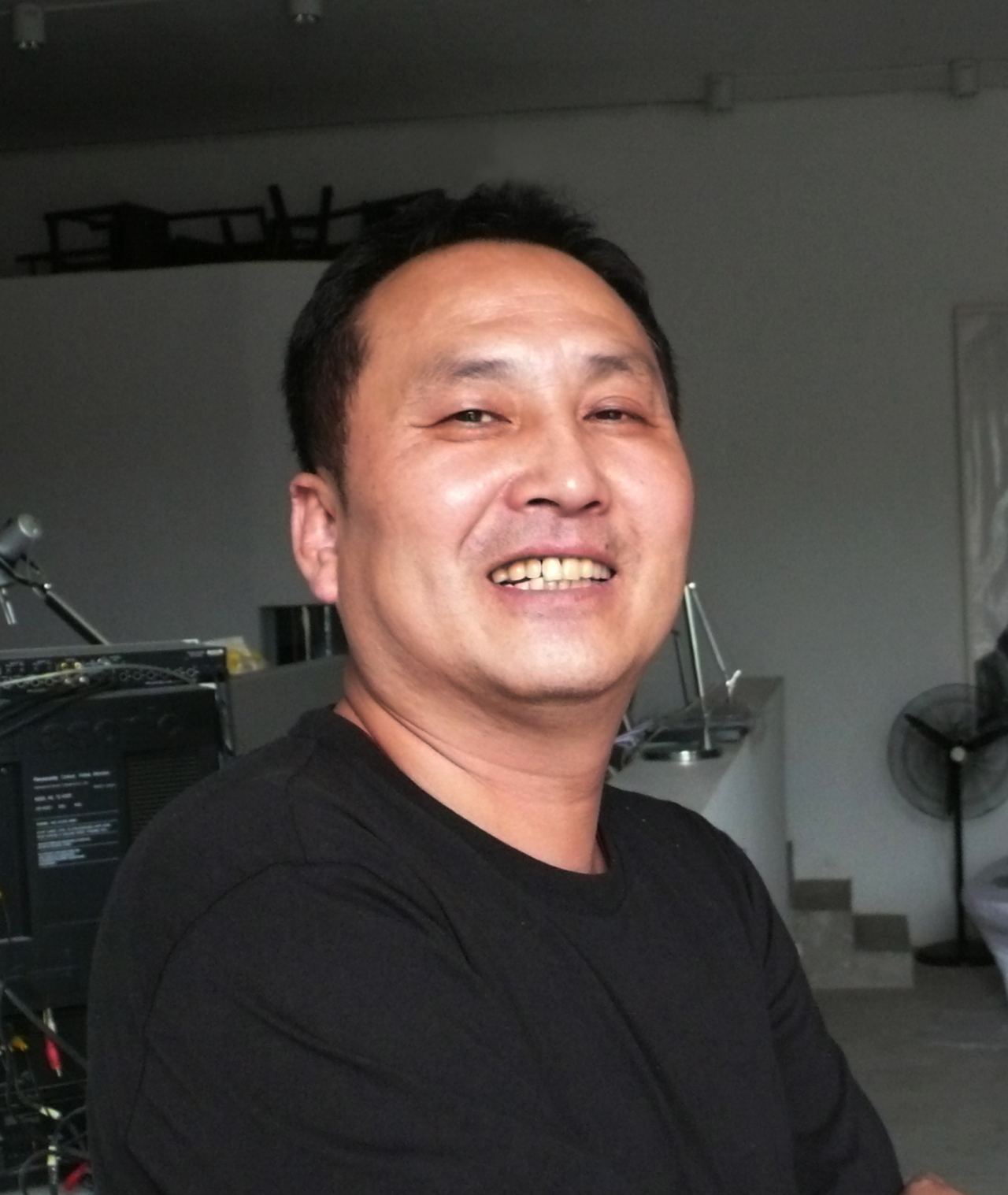—
“For A Bigger Picture”
/ Wang Gongxin

Wang Gongxin
He was born in 1960 Beijing, China. He lives and works in Beijing and New York. Wang was admitted to the Capital Normal University Academy of Fine Arts in 1978, and taught there upon graduation in 1982. In 1987, he went to State University of New York (SUNY) study a master’s degree. In 2013, Wang nominated for the Olivier Award’s XL Video Award for Best Set Design. In 2014, he was awarded an Honorary Doctoral degree at SUNY.
He is one of the pioneers and important representatives of Chinese image art, and also the earliest artist engaged in new media creation in China. Wang Gongxin, who began his art career by studying painting more than 20 years ago, started to use image digital editing technology for creation in China.
—

In 1987, Wang Gongxin came to the State University of New York. Before that, he was a young professor in the oil painting department of Capital Normal University. Wang Gongxin, who first came to the United States, felt an unprecedented cultural impact. He changed from traditional oil painting to contemporary art in his study, life and artistic practice in the United States.
He gave up the previous achievements and made a fresh start. Wang Gongxin created his first image work Brooklyn Sky in 1995 and began to use a variety of mixed materials for different artistic practices.

People who watch Wang Gongxin's works are easily touched by the banter of details. He once said, “A complete work is composed of details and represents the overallvisual language. The moremeaning the work carries, the greater the tension.”

Wang Gongxin’s examination and application of Chinese culture can often be seen in his works. Katherine Grube once said, “Wang Gongxin's conscious avoidance of easily recognizable Chinese symbols and the cultural factors he introduced atcreative materials and ideas not only reflected his desire to alienate the mainstream of art, but also a self-examination to clarify how the identity of"Chinese" was reflected in different geographical and cross-ethnicenvironments.”


Wang Gongxin's first solo exhibition in London, "In Between" which has just ended at the White Cube in London, features 12 multimedia works, reflecting Wang Gongxin's ongoing exploration of the differences between China and the US. He argued that light is used differently in the East and West: Western cultures looking for illumination and clarity; East Asian cultures embracing shadow and subtlety. Exploring cultural connections between light and mindsets, Wang also interrogates Japanese post-war architect Kurokawa Kisho’s concept of ‘grey space’, where distinctions between inside and outside, artificial and natural, and individual and collective are blurred.

Once again, these works combine elements of traditional Chinese landscape painting with Western conceptual art. Like "Readable Scenery (2019)", three marble panels bear words associated with landscapes, including ‘horizon’, ‘river’, and ‘farmland’, readable only when illuminated by a series of internal lights. Mounted on the work’s smooth marble surfaces are a variety of 3D-printed representations of commonplace objects, among which are sections of ornate picture frames, a light bulb and electrical cord, a spigot and bar of soap. The row of real coat hangers located in the upper left-hand corner of the work, Wang says, is a nod to Trap, the famous 1917 readymade by Marcel Duchamp fashioned from the same type of hanger.
Wang Gongxin's works reflect his continuous exploration of the differences between culture. His works can produce unexpected results in the process of interacting with viewers. In abroader sense, he focuses on the complexity of living in a globalized world and the relationship between perceptual phenomena and human conditions.
—
Wang Gongxin has exhibited widely around the world, including major exhibitions such as the Shanghai Biennial, and Echigo-Tsumari Art Triennial, and has exhibited in institutions such as the Tokyo Watari Museum of Contemporary Art, Tokyo, Japan; MOMA PS1, New York, USA; Queens Museum of Art, New York, USA; Haus der Kulturen der Welt, Berlin, Germany; Tate Liverpool, Liverpool, UK, National Gallery of Victoria, Melbourne, Australia; Victoria and Albert Art Museum, London, UK; Fukuoka art Museum, Fukuoka, Japan; ZKM Museum of Contemporary Art, Karlsruhe, Germany; SF Moma, San Francisco, USA; Guggenheim Museum, New York, USA; Mori Art Museum, Tokyo, Japan; Hamburger Bahnhof, Berlin, Germany; Institute for Contemporary Arts, London; The Bronx Museum of Arts, New York, USA; White Cube Gallery, Hong Kong, China; OCAT Contemporary Art Center, Shanghai, China; Ullens Center for Contemporary Art, Beijing, China; and National Art Museum of China, Beijing, China.
